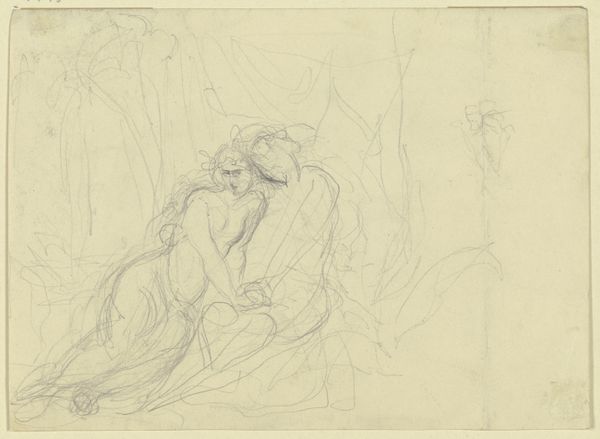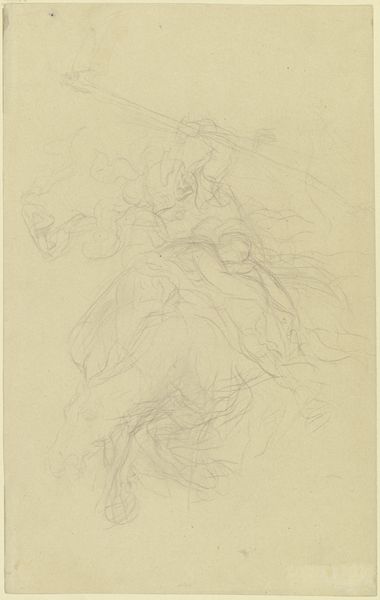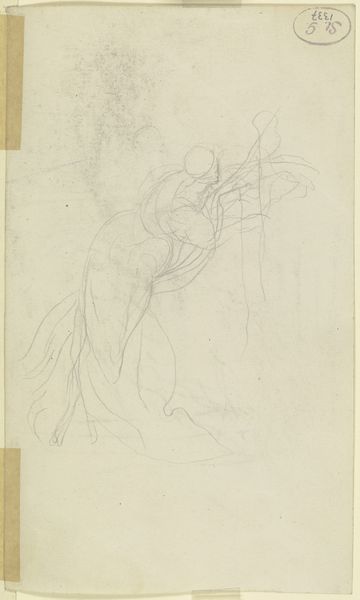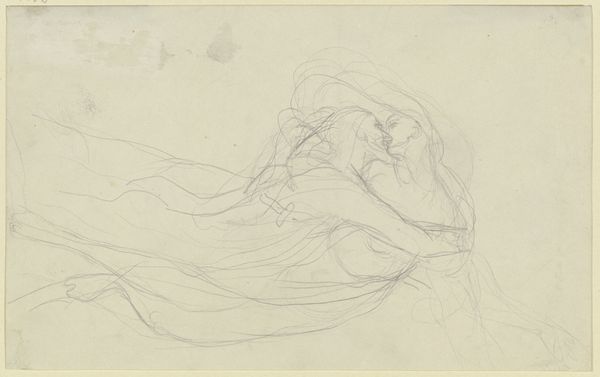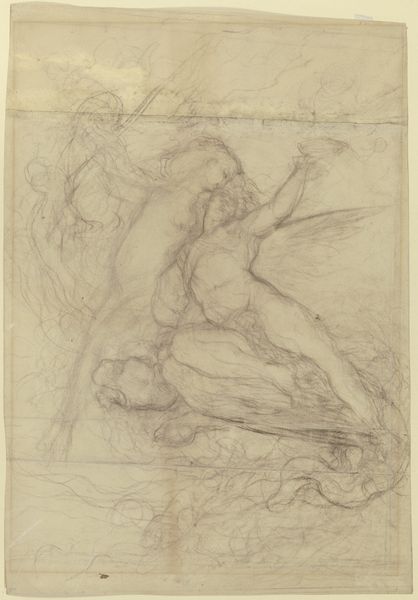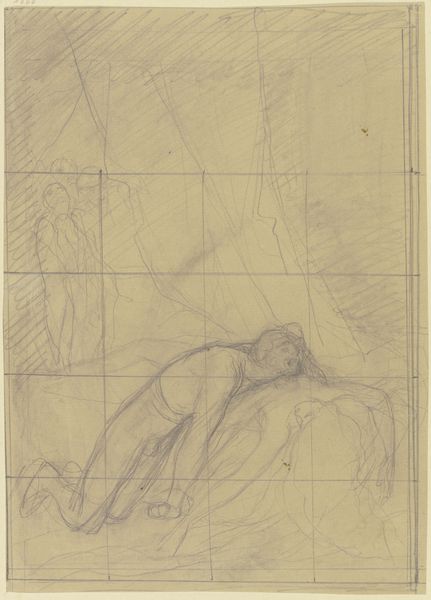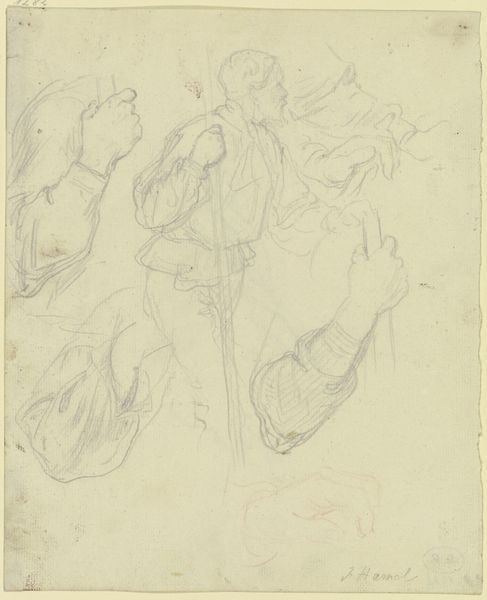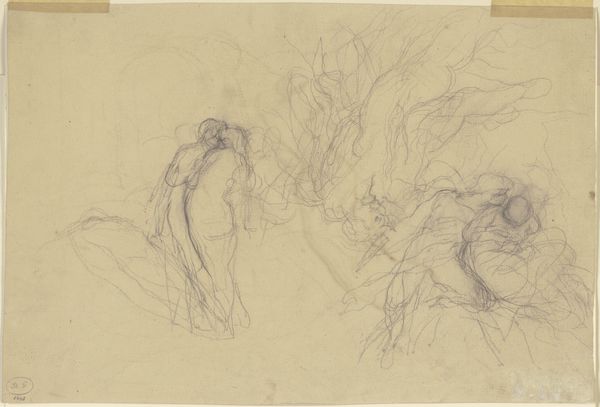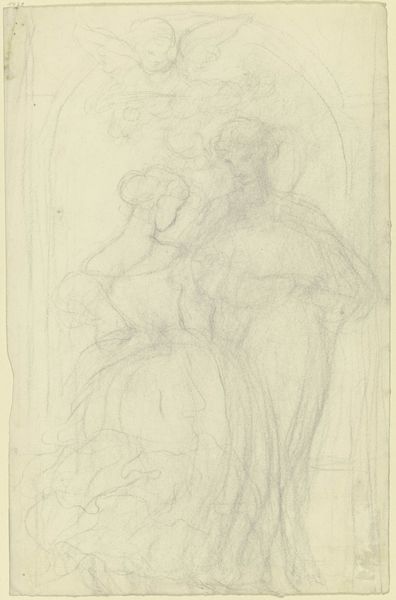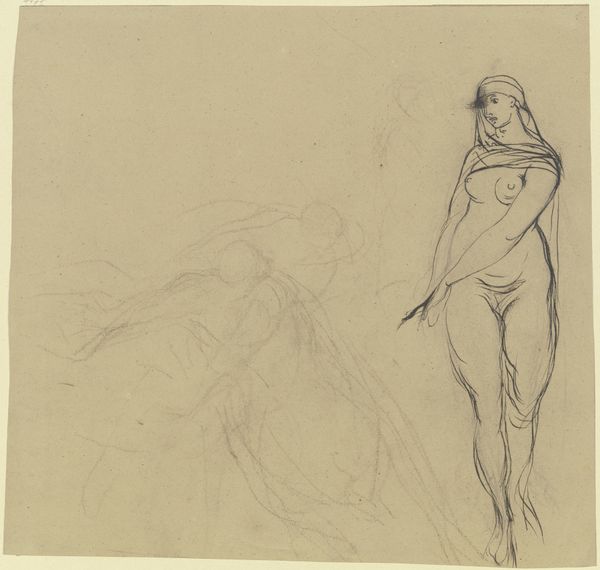
drawing, pencil, chalk
#
drawing
#
figuration
#
pencil
#
chalk
#
nude
Copyright: Public Domain
Curator: Here we have "Two embracing nudes", a drawing by Victor Müller. The medium appears to be pencil and chalk on paper, a study perhaps? What strikes you initially? Editor: There's a real sense of vulnerability, even rawness, in this piece. The visible pencil lines and erasures show the artist's process, and it feels unfinished in a way that emphasizes the bodies as sites of labor and production rather than objects of aesthetic beauty. Curator: I see that, absolutely. Müller’s process does reveal itself plainly here, emphasizing his hand. Consider though, that the academic tradition strongly emphasized life drawing as crucial to an artist's development and acceptance. Were these materials—chalk and pencil, paper—democratizing, challenging the elite oil painting of the time? Was that part of his intention? Editor: I think it's important to ask how "academic tradition" reproduces power structures. The nude, throughout art history, has often been about the male gaze and objectification. But I find here a sort of defiance by embracing bodies not defined by traditional beauty standards. Can this embrace also symbolize political solidarity? Curator: The softness and the almost ethereal quality are enhanced through those material choices and a loose rendering style. I wonder if Müller’s social standing as an artist and his relationship to the Salon system were affecting his freedom of handling, his material choices here, as it relates to creating "acceptable" artwork. Editor: The lack of definitive outlines speaks volumes about identity and boundaries. How gender and sexuality intersect and become sites of ambiguity and resistance, then and perhaps now. These materials were available and affordable, yes, which allowed more diverse participation; however, systemic prejudice continued—and does so even today. Curator: These gestures may echo not just physical closeness, but artistic and cultural change, challenging what and who can be seen as legitimate. The act of choosing these everyday tools, then transforming them into tools for depicting radical acceptance is a statement on the material of resistance itself. Editor: Right, resistance can be drawn from anything at hand and is always available in unexpected places and the smallest actions, a sentiment still poignant today. Curator: I leave this encounter with a heightened sense of the many social considerations in Müller's apparent material handling, with those humble tools speaking volumes about human bodies and culture. Editor: Agreed, there's something revolutionary in embracing fragility, in process, and in making the everyday visible within structures designed to obscure.
Comments
No comments
Be the first to comment and join the conversation on the ultimate creative platform.
